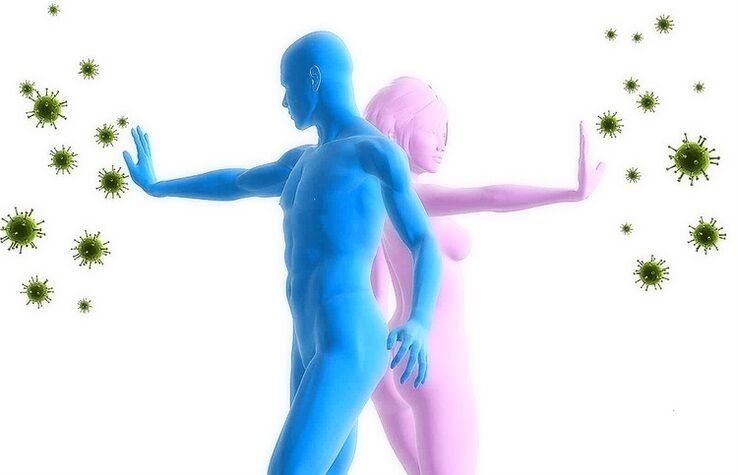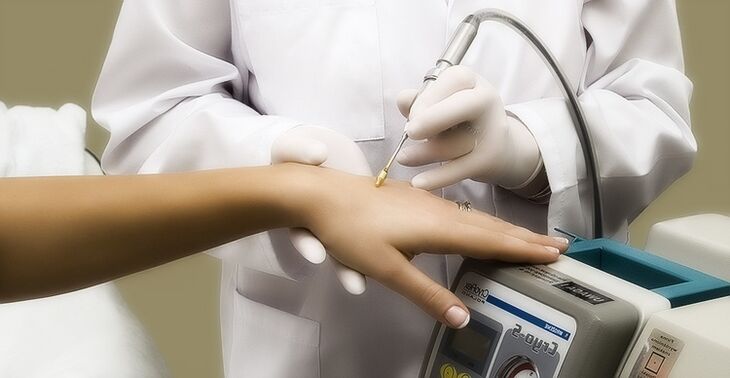Human papillomavirus is a cancerous disease. The main manifestations of HPV are the formation of warts, papillomas and papules on the skin and mucous membranes. Both women and men are affected by the virus.
Causes of the appearance and activation of HPV
Note! The main cause of the appearance of papilloma virus in the body is infection from an infected person.
Factors that cause infection include:
- weakened immunity;
- bad habits;
- frequent and severe nervous shocks;
- viral infection;
- pathology of the gastrointestinal tract;
- Frequent change of sexual partners, unprotected sex.
Is it possible to cure human papillomavirus?
HPV in its active growth stage is treatable.
The main goal of treatment is to eliminate symptoms and strengthen the defense mechanisms of the human body.
Depending on the type of virus, symptoms, and complications, different treatments may be used.
Can HPV be cured permanently?
The characteristic of the HPV virus is that once it enters the body, it stays there forever. During the period when the body has strong defense mechanisms and is not exposed to the above risk factors, the virus will be in a calm state and not activated.
With a weakening of the immune system, non-compliance with the rules of hygiene, deterioration of health, the papillomavirus can reactivate.

Methods of infection with papillomavirus
HPV infection occurs through direct contact with an infected person, through mucous membranes and skin. There are several routes of infection:
- The main path is sex. The probability of transmission of papillomavirus from an infected partner during unprotected intercourse is 60-70%. The risk increases dramatically with the frequent change of partners. With the presence of bacteria on the mucous membranes, it is possible to spread the infection even during kissing or oral sex;
- HPV infection also occurs in families: by sharing towels, dishes, and cleaning products with an infected person. There is a risk of papillomavirus infection in public saunas, baths and swimming pools;
- It is also possible for vertical transmission of the virus - from mother to fetus during birth.
Why is the human papilloma virus dangerous?
All types of HPV can be divided into two categories: low-risk and high-risk viruses. Groups of the latter are more likely to develop cancer.
Note! HPV poses the greatest risk to women: the highly cancerous strains of the virus are most susceptible to infection.
In women, papillomavirus can cause a number of diseases related to the reproductive system:
- pathology of the cervix: erosion, leukoplakia, adenocarcinoma, cancerous tumors;
- Cancer of the external genitalia, anal area.
In addition, the development of the disease is accompanied by the appearance of warts and papillomas on the genitals, limbs, armpits and neck. Tumors cause discomfort, interfere with hygiene and lead a habitual lifestyle, so they should be removed.
In men, the risk of developing cancer with HPV is lower, but not excluded. In addition, acute papillomas can form on the penis that causes discomfort and interferes with normal sexual activity. Such tumors should be removed immediately.
Diagnostic method
Diagnosis usually begins with a visual examination by a physician. During the examination, it is necessary to examine the mucosa and skin, especially carefully examine the areas most often forming warts and papillomas: genital area, armpits, neck.
The main methods for diagnosing HPV include:
- Women definitely need to have colposcopy, examination of the cervix and vagina, and also pass cytological tests (removal of the mucous membranes). If cancer is suspected, an additional biopsy may be indicated;
- PCR analysis (polymerase chain reaction). Allows you to identify viral DNA from any material provided for analysis;
- The digene test is a more accurate analysis. According to its results, the papilloma virus can be detected, its type can be recognized by DNA, and the degree of malignancy can be determined.
General treatment regimen for HPV
Currently, there is no unified international protocol for the treatment of human papillomavirus. Two-component regimens have shown the best effect: they combine surgical removal of viral lesions and also the use of specific antiviral therapy. The effectiveness of this HPV treatment is up to 90%.
Features of treatment in children
When HPV is activated in a child, doctors first of all use conservative methods of treatment: the appointment of immunomodulatory drugs and vitamins, as well as local treatment of the rash with ointments, compression bandages.
Surgical intervention is usually applied only in cases when, during observation, warts and papillomas develop.
Features of treatment during pregnancy
Note! HPV during pregnancy does not have a markedly negative effect on its development and the course of pregnancy in general.
The main recommendations for the treatment of papillomavirus during pregnancy:
- If the virus is detected before pregnancy, you should be treated immediately. This will normalize immunity and avoid thrush and other infections;
- Pregnancy should be started at the end of the second cycle after completion of treatment;
- Treatment for HPV during pregnancy should not be started earlier than the 28th week of pregnancy - the period when all organs are formed in the baby. This will help avoid the bad effects of the drug on the child's body.
papillomavirus treatment
The main treatments for HPV are:
- taking specific antiviral drugs;
- a course of immunomodulators;
- surgical removal of the tumor (papilloma, warts);
- reduce the symptoms of the disease by traditional medicine methods.

Antiviral therapy
Important! The choice of drug depends on the type of virus and the characteristics of the body. Only a doctor can prescribe the course and dosage of the drug, self-medication can aggravate the situation.
Immunosuppressive drugs
The appointment of immunomodulators should be done by the doctor in accordance with the patient's immunologic profile - this will achieve faster and more stable results.
Surgical method (removal of growths)
The main goal of HPV surgery is to remove cells that have been changed by the virus from the body.
Excision can be performed in several ways, depending on the characteristics of the disease and the indications of the doctor:
- Electrolytic coagulation. Depending on the HPV group, the treatment effectiveness ranges from 80% to 95%;
- Remove the rash with a laser. High efficiency, but high recurrence rate. In addition, the wounds after the procedure take a long time to heal - up to 4 weeks;
- radio wave anatomy. It is used to remove single formations;
- Cryotherapy method. Effective - up to 65%, recurrence occurs in 40-50% of cases;
- Chemicidal agents. Only applied to cases of itching on the genitals. Relatively low efficiency - no more than 40%.
Folk remedies
Note! Alternative medicine methods should not be considered a complete cure for HPV. However, they are a reasonable and innocuous way to weaken the active expression of the virus.
The most effective against papillomavirus are folk remedies such as: fresh potato juice, boiled wire, a mixture of garlic and vinegar, Kalanchoe leaves, tea tree oil.
They should be used in the form of compresses, bandages for external manifestations of HPV - papillomas, warts.
Prevention of HPV recurrence
The main goals of preventing the recurrence of warts and papillomas are to strengthen immunity and maintain hygiene at home and in public. Encourage:
- adhere to the correct diet;
- undergoing vitamin therapy;
- adhere to the normal working regime, get enough sleep and fully relax;
- increase physical activity.
Important! Vaccination is an effective method to prevent HPV reactivation - it can be used to protect against the most dangerous groups of viruses for a long time.

























